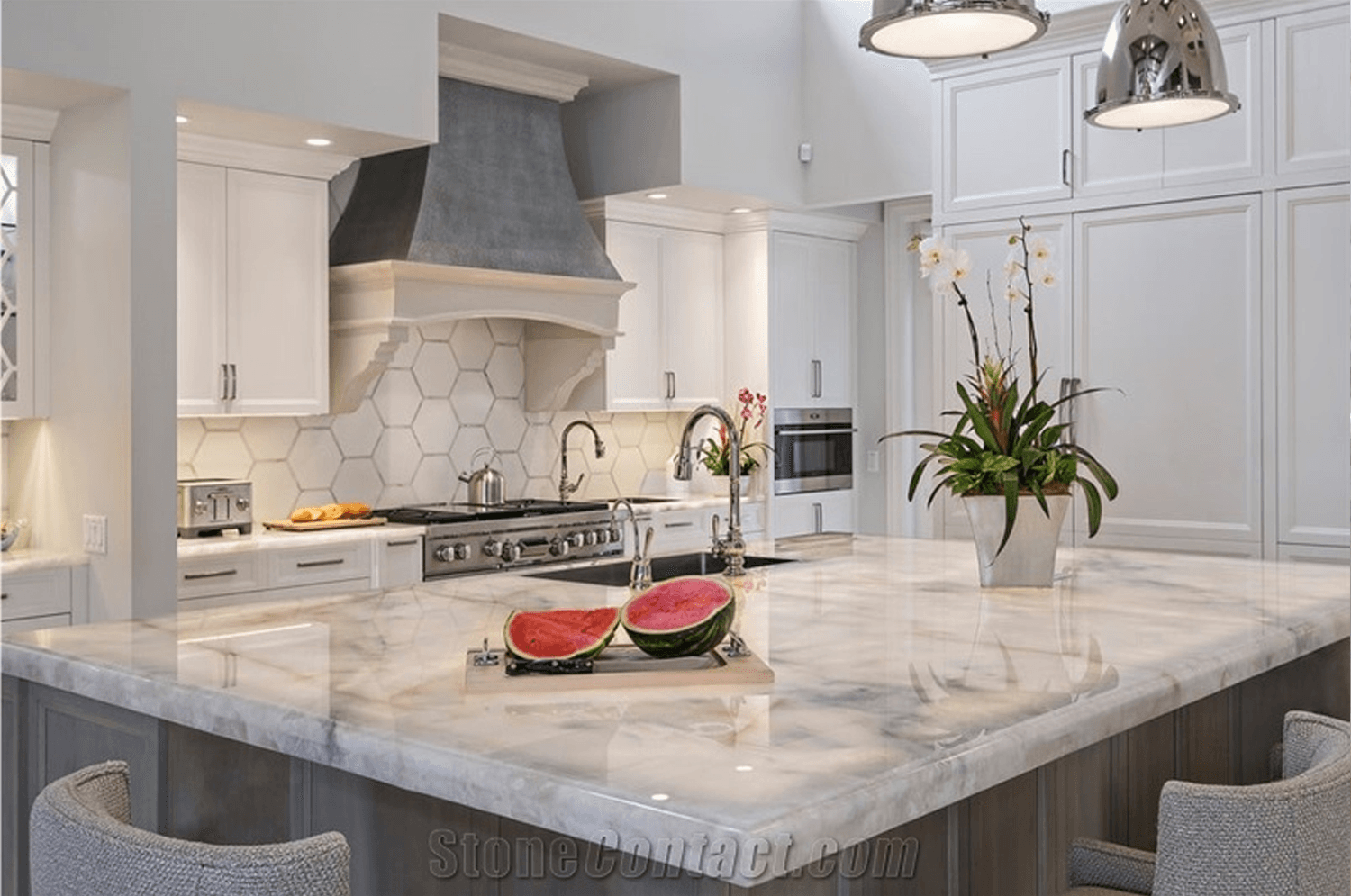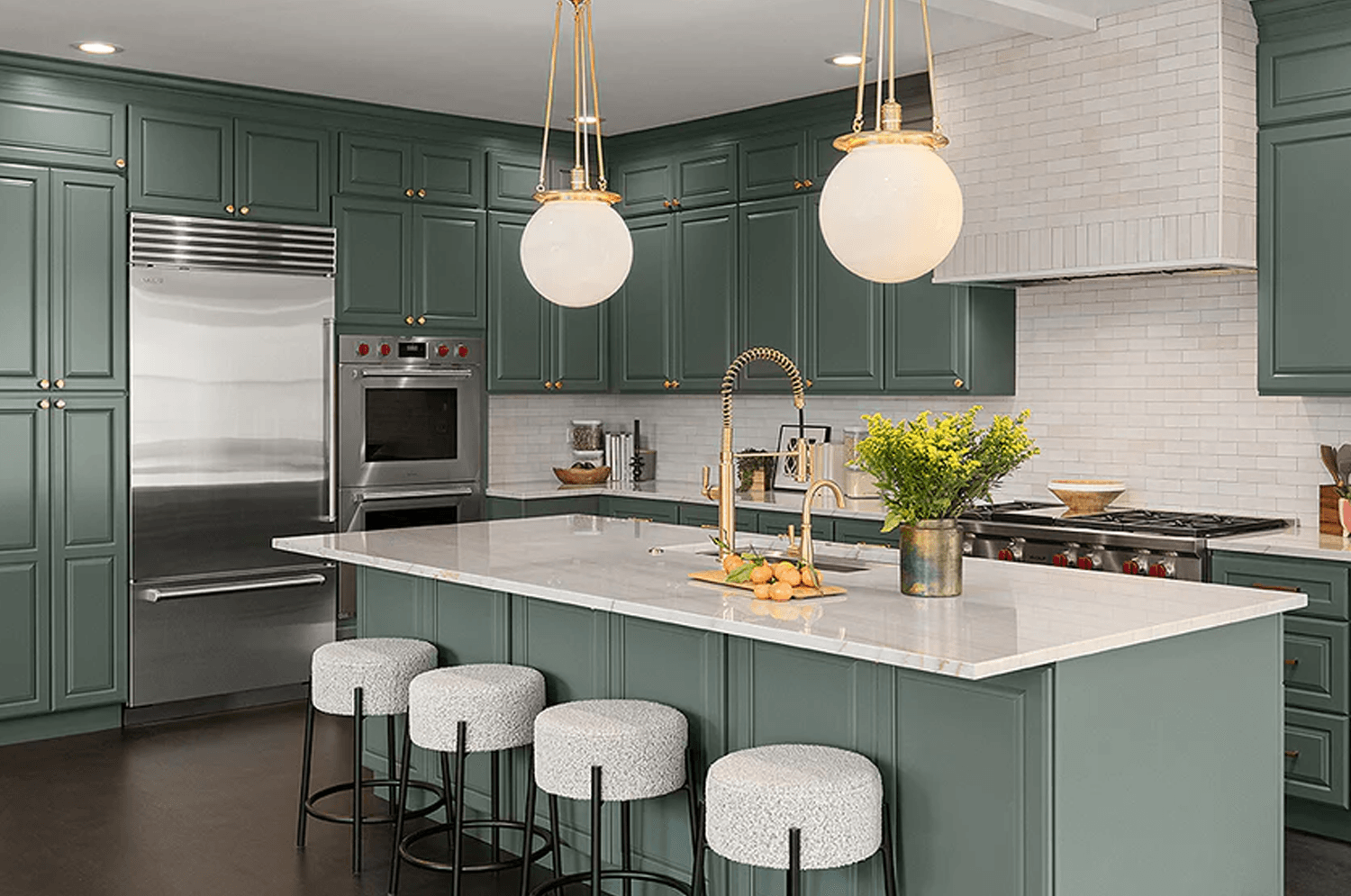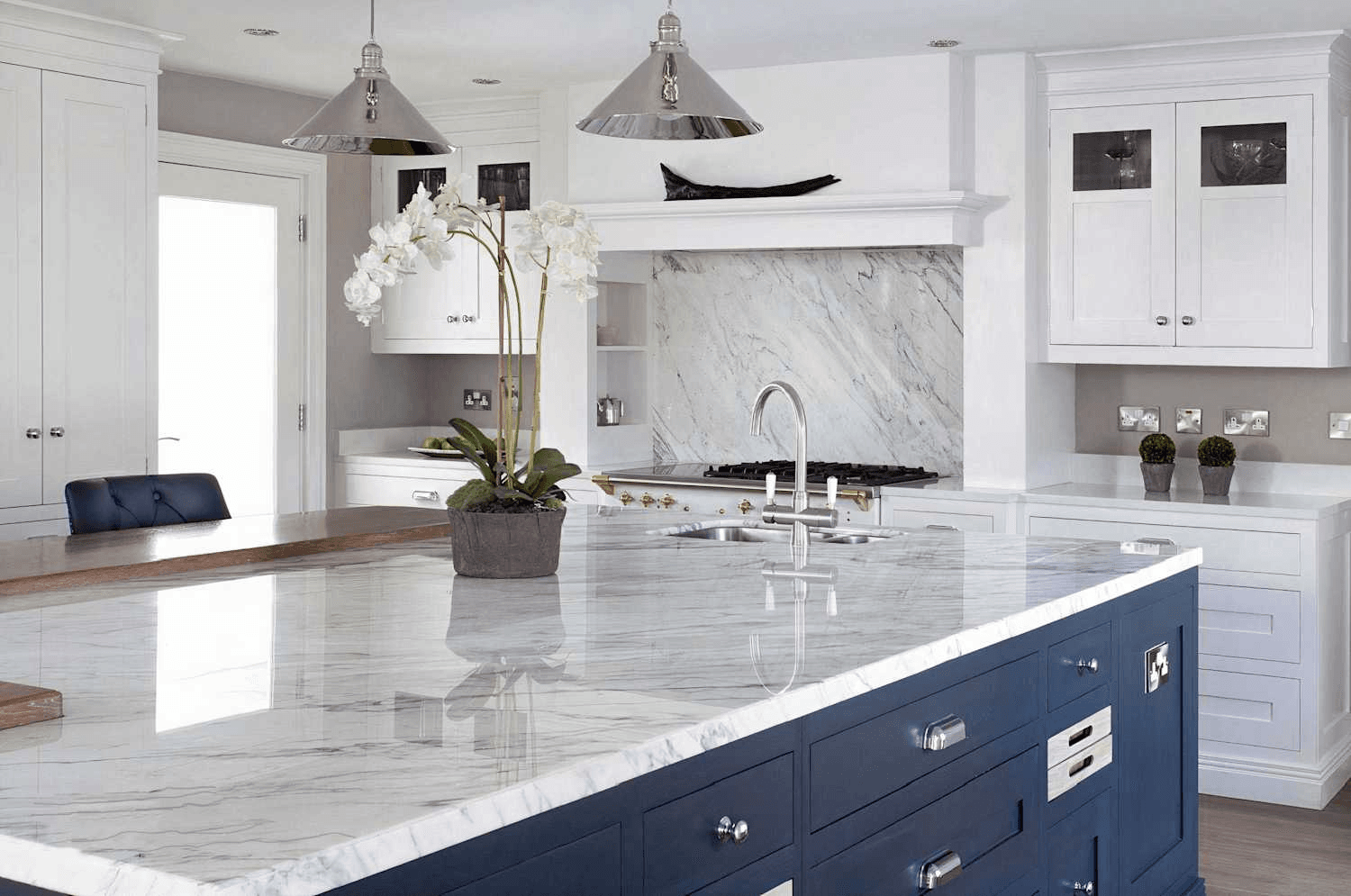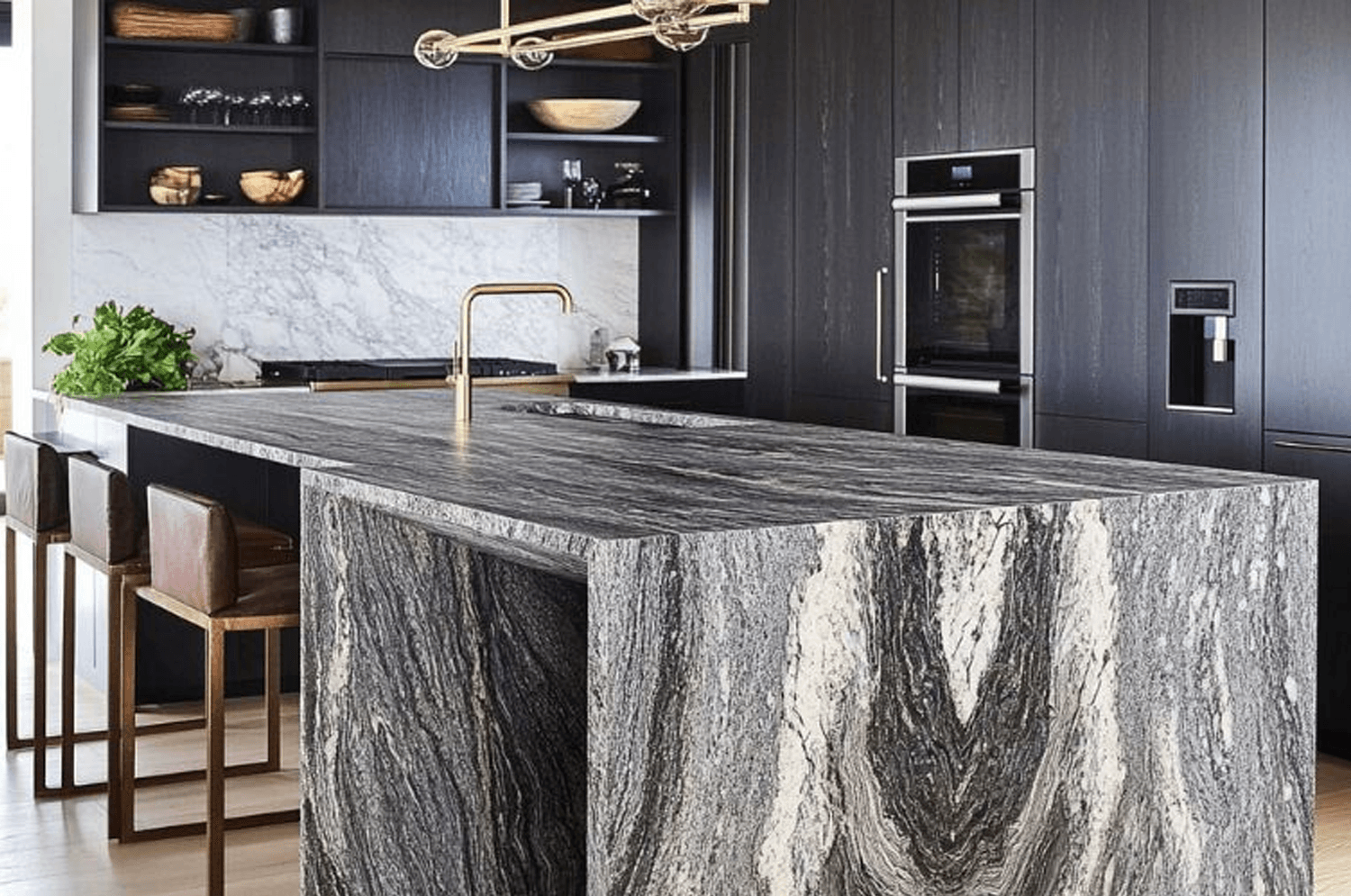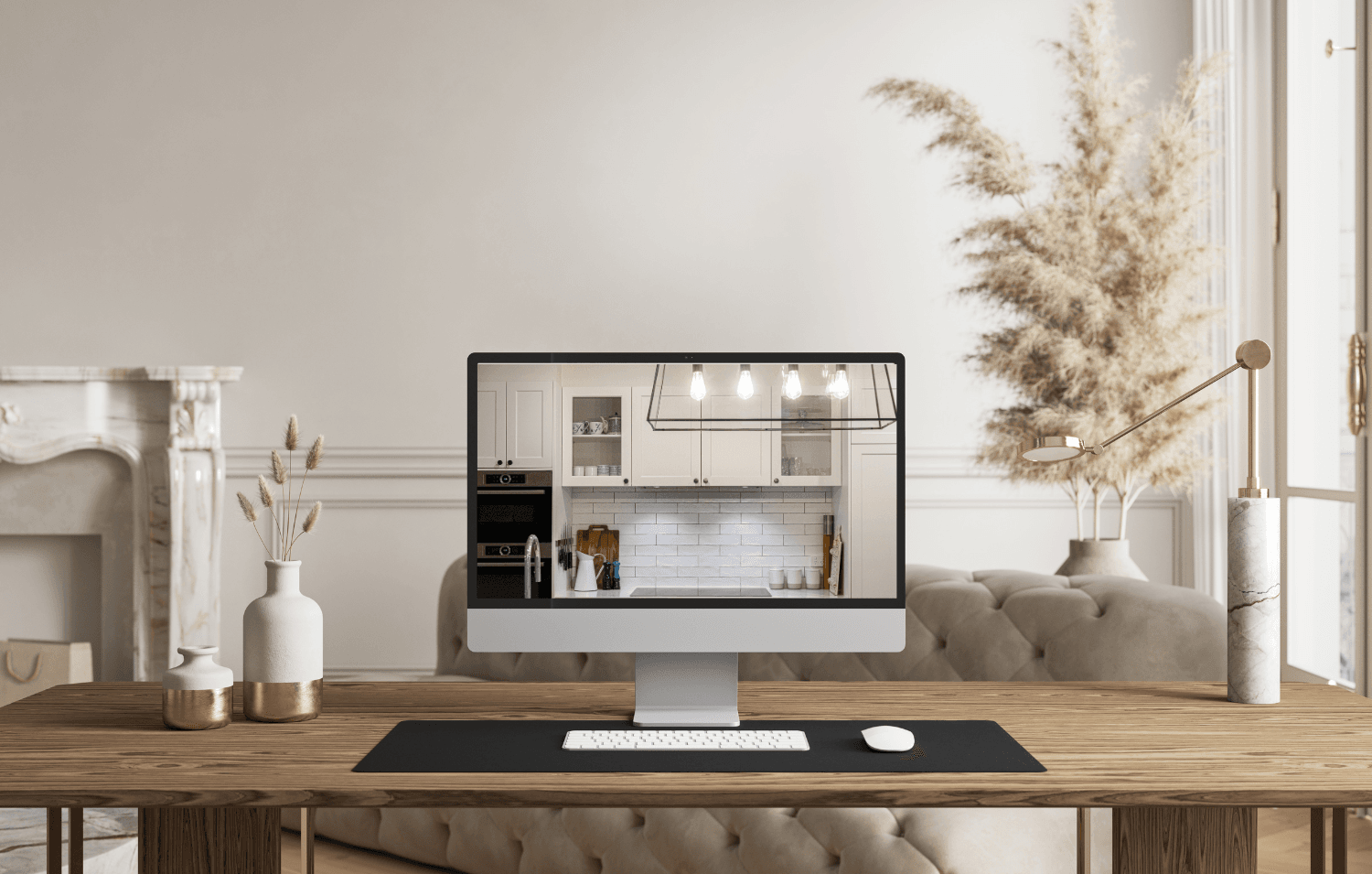Is Quartzite the Right Choice for Your Kitchen Remodel?
If you’re exploring countertop options for your kitchen remodel, you’ve probably come across the term Quartzite—and no, it’s not the same as Quartz. While their names sound similar, quartzite is a natural stone, and it brings its own set of strengths (and challenges) to your design.
At Spaces by Candi, I help homeowners compare materials every day, and quartzite is one of the most beautiful and durable options out there—if you know what to expect. Here’s what you need to know before choosing quartzite for your space.
What Exactly is Quartzite?
Quartzite is a naturally occurring metamorphic rock formed from sandstone that’s been exposed to heat and pressure over time. It’s mined from quarries, cut into slabs, and polished to become the elegant, high-performance surface we see in high-end kitchens.
Because it’s a natural stone, every quartzite slab is completely unique, with veining, colors, and movement that you won’t find in engineered surfaces.
Pros of Quartzite Countertops
There’s a reason quartzite is gaining popularity among homeowners and designers alike:
- Highly Durable: Quartzite is one of the hardest natural stones, making it resistant to scratches and wear.
- Heat Resistant: Unlike quartz, it holds up well to hot pans—great for serious home cooks.
- Natural Beauty: If you love the look of marble but want something stronger, quartzite offers similar veining with better performance.
- UV Resistant: Quartzite won’t fade or discolor in sunlight, so it’s a great choice for bright kitchens or even outdoor use.
Things to Consider About Quartzite
Quartzite isn’t for everyone. Here are a few things to weigh before committing:
- Needs Sealing: Like most natural stones, quartzite is porous and requires regular sealing to protect against stains.
- Can Be Expensive: It’s often priced similarly to high-end marble or granite.
- Limited Color Range: Most quartzite slabs come in shades of white, gray, blue, and green—not as wide a selection as engineered materials.
- Mislabeling Issues: Some stones labeled as “quartzite” are actually softer stones like dolomite or marble—so sourcing from a reputable supplier is key.
Popular Quartzite Colors & Looks
Each slab of quartzite is unique, but a few colors are especially popular among homeowners:
- Taj Mahal: A warm, creamy quartzite with soft veining—subtle and versatile.
- Sea Pearl: Cool-toned with hints of gray and green—great for modern and transitional kitchens.
- White Macaubas: Clean white background with fine linear veining—ideal for minimalist designs.
- Azul Macaubas: A bold blue quartzite that makes a dramatic statement.
- Cristallo Quartzite: Translucent and luminous—often backlit for a luxury effect.
Quartzite vs. Quartz: What’s the Difference?
It’s easy to confuse these two, but here’s a quick breakdown:
| Feature | Quartzite (Natural Stone) | Quartz (Engineered Stone) |
|---|---|---|
| Heat Resistance | Excellent | Moderate (can discolor) |
| Maintenance | Needs sealing | Low maintenance |
| Appearance | Unique, natural patterns | Consistent, wide options |
| Durability | Very hard | Durable, but resin-based |
| Cost Range | Moderate to high | Moderate to high |
Is Quartzite Right for Your Remodel?
If you’re looking for a natural surface with elegant movement, high durability, and true heat resistance, quartzite could be a perfect match. It’s especially well-suited for homeowners who love the look of marble but need something more practical for daily use.
However, if you’re looking for zero-maintenance or want bold color options, you might consider quartz or other engineered materials instead.
Need Help Visualizing It?
Choosing countertops is a big decision, and seeing them in your space can make all the difference. I offer virtual kitchen design and 3D renderings that let you preview quartzite (or any material) with your cabinetry, layout, and lighting before you commit.
Let’s bring your kitchen vision to life—one material at a time.

